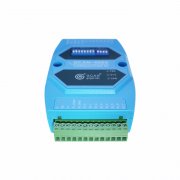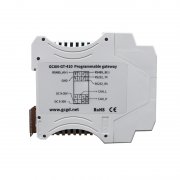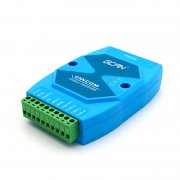This car CAN protocol analysis tool can help you
When we were in school, most of us had subjects that we were good at and subjects that we were not good at. To say which subject made most people feel broken, it was English. Who made it not our mother tongue, and we Haven't lived in the context of English since childhood? The reason why English is not easy to learn is that there are many differences between English grammar and Chinese grammar. For example, we rarely use inverted sentences in Chinese, but we often use English. This difference will lead to our habit of learning Chinese. It's weird if you can learn English well. As the saying goes, there are no rules and no squares. Grammar is a kind of rule of speech. By extension, everything has its own rules of operation. Only by observing the rules and understanding the rules can you do good things, such as analyzing the CAN bus protocol.
What is the CAN bus? That is a controller area network developed by Bosch, Germany, and it is currently one of the most popular automotive and industrial control buses. The data transmission speed is fast, the anti-interference ability is strong, the node equipment can be connected to many, and the secondary development is less difficult. Because of these advantages, it is widely used in the fields of fire host networking, industrial automation control, automobile control, artificial intelligence development and other fields. Because of the wide range of applications of the CAN bus, it will bring very serious consequences once it has problems (for example, problems with the car's CAN bus will cause instrument panel failure, brake failure, etc.). Therefore, we should start with the operating rules of the CAN bus, and often check and maintain the CAN bus system to avoid accidents and take precautions.
We continue to talk about the analysis of the CAN protocol. With the current commonly used solutions, the analysis of the CAN protocol should do so.
(1) First, you should prepare various CAN protocol analysis tools, including a USBCAN analyzer, a computer equipped with CAN protocol analysis software, a number of cables that can connect the target CAN device and the computer and the USBCAN analyzer. External power supply, etc., and then physically connect all equipment and tools, and move on to the next step.
(2) After completing the physical connection of all equipment tools, we use the control variable method to analyze the CAN data content one by one. Let's take the analysis of the car's CAN protocol as an example. During the operation of the car, every action actually corresponds to this CAN data. For example, opening and closing the door is one data, and turning on and off the lights is another data, and so on. Therefore, according to this situation, we let the car make a specific action and let it form a variable, while other actions are not carried out. At this time, there must be a constant change of data in the analysis software, which corresponds to the car’s Action, can you be seated? Through this method, most of the automotive CAN protocols can be parsed, provided that you have to know this series of operations.
In order to meet everyone's CAN protocol analysis needs, Shenyang Guangcheng Technology also launched a special car can protocol analysis tool USBCAN II Pro. Shenyang Guangcheng Technology USBCAN II Pro automobile can protocol analysis tool is a high-performance CAN-bus communication interface card that integrates 2 CAN interfaces. This type of CAN card is compatible with the full-speed specification of USB2.0 bus. It adopts Shenyang Guangcheng Technology's USBCAN II Pro car can protocol analysis tool. The PC can be quickly connected to the CAN-bus network through the USB interface to form a field bus laboratory, industrial control, CAN-bus network control nodes for data processing and data acquisition in the field of CAN-bus networks such as intelligent communities and automotive electronic networks.






